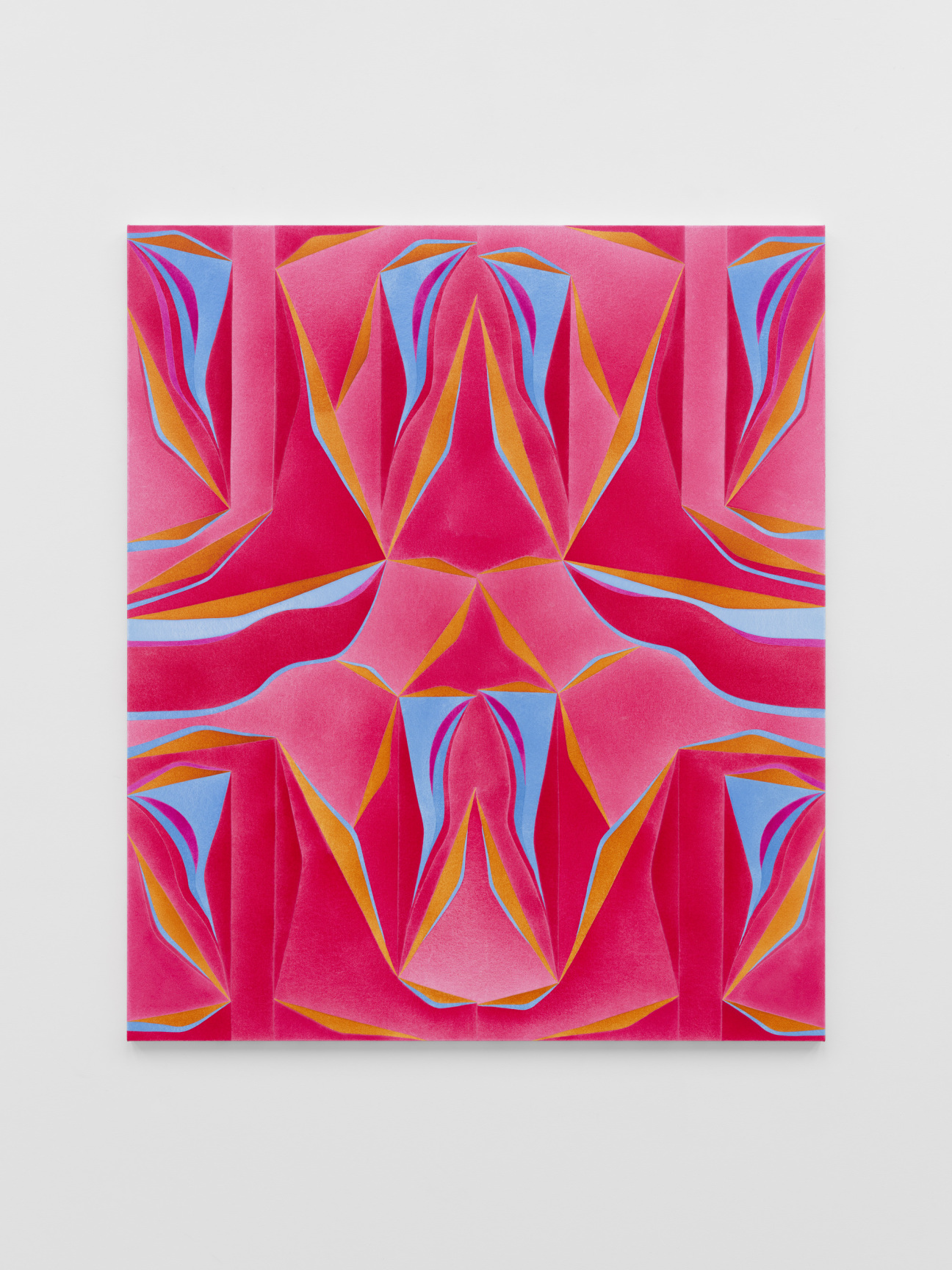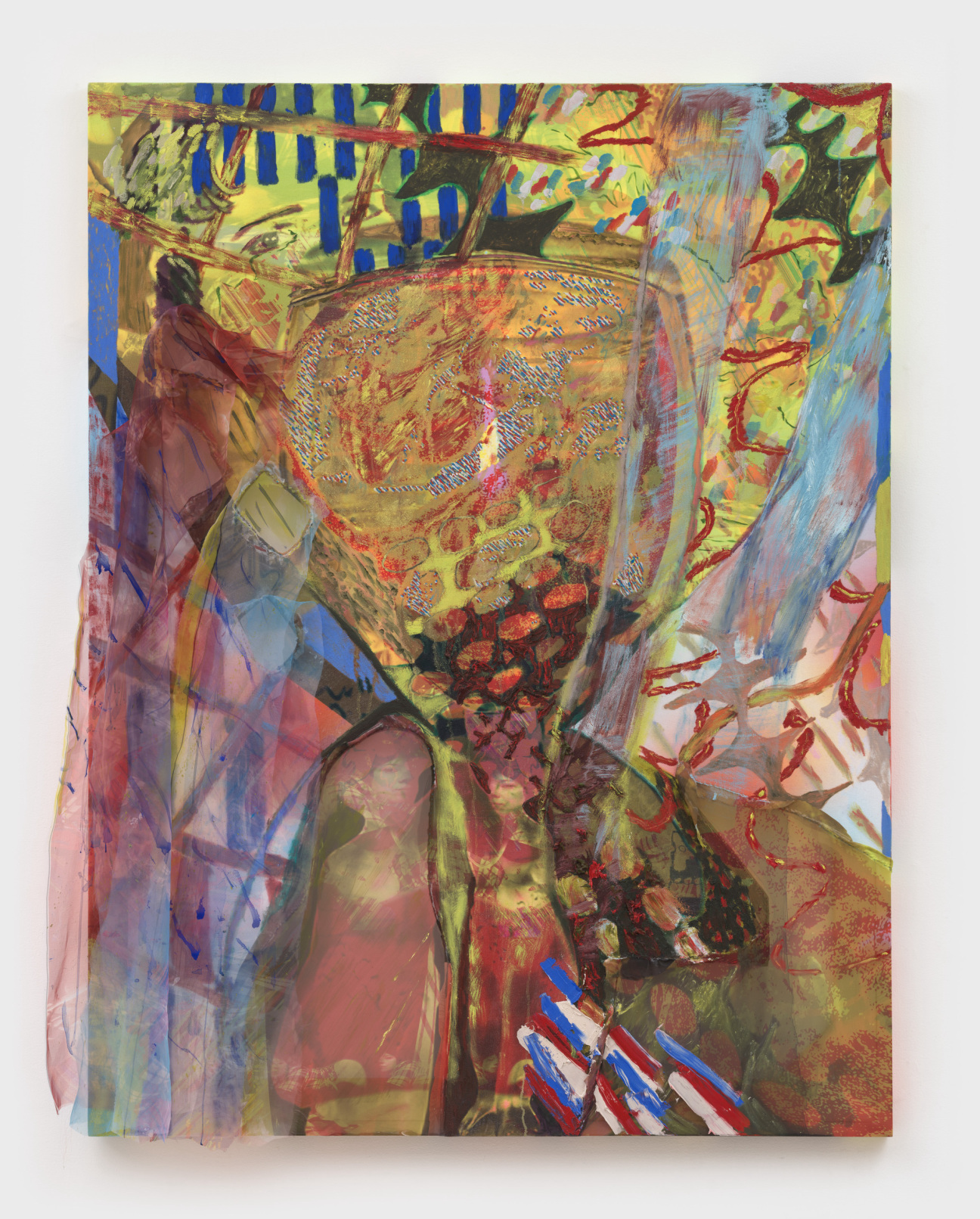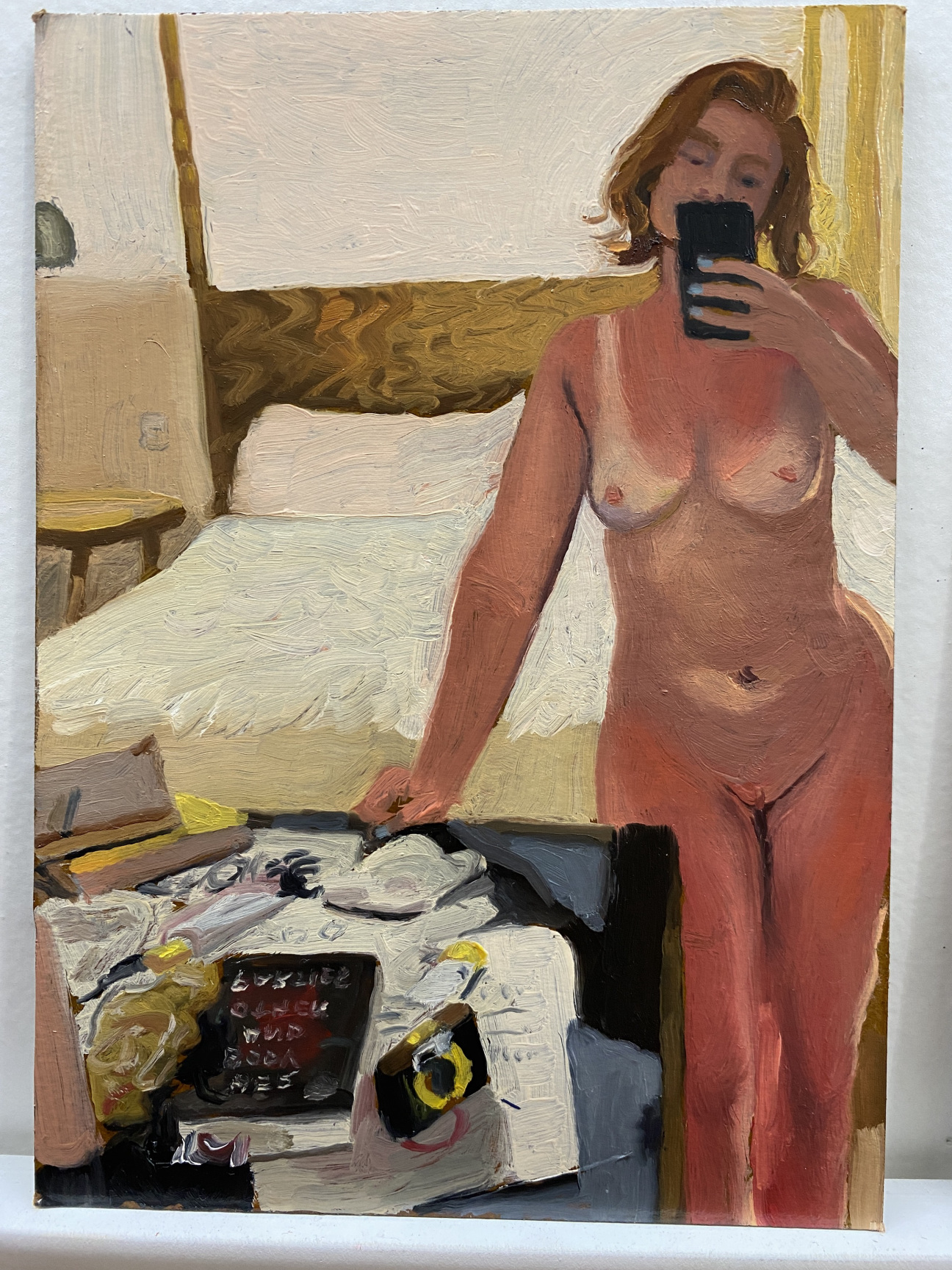
Every few seasons the art world wonders if painting is over.
And every few seasons, we’re reminded it’s not. Fall 2024 is shaping up to be the latter. In back rooms and upstairs spaces, galleries are hanging high-energy painting shows that are both serious and fun—the fact that they are easy to love does nothing to diminish the rigor behind their making. And of the five artists included here, four live and work in New York, reminding us that no matter how filthy and expensive the city may get, like painting, New York will never die. The market may not know what it’s doing, but the artists do.
Below, we share five shows featuring the painters you need to know.

September 26–November 7
For her White Cube debut, Brooklyn-based painter Margaux Ogden takes the ancient Roman Baths of Caracalla as her starting point, but quickly departs from any realistic rendering in favor of exploring the colors and forms that evolve as she works. “Once I set up a structure, there are endless possibilities within that structure, and through repetition, I’m allowed a great deal of freedom and decision-making while painting,” she shares. “Basically, despite any repetition, the paintings are intuitive.”
The resulting works have a hint of Georgia O’Keeffe, if O’Keeffe went Pop, with vibrant saturated hues that belie the sense of calm the paintings exude. Ogden refuses the assistance of tape or a ruler, her mastery of the material only one element of in the brilliance of the works.
Ogden’s exhibition, part of White Cube’s “Introductions” program, comes on the heels of three solo shows—at Tif Sigrids in Athens, Georgia; Berggruen in San Francisco; and Deanna Evans Projects in New York—over the past year.

Victoria Dugger: "Tough Love" at Sargent’s Daughters
September 6–October 19
Fresh off a summer residency at MacDowell, Victoria Dugger’s second outing with Sargent’s Daughters levels up her maximalist paintings (and sculptures) with new materials like streamers and astroturf in addition to the oversize bows and glitters that are a constant for the artist. A lifelong resident of Athens, Georgia, Dugger’s work is Southern Gothic, filtered through references ranging from Francisco Goya, Frida Kahlo, Lisa Yuskavage, and Philip Guston to Lisa Frank and old Disney cartoons.
Dugger’s bold material experimentation makes for a powerful visual encounter that is both pleasurable and distressing. “As a disabled person with a duality that manifests between the softness of my body and the rigidity of my wheelchair I’ve always been interested in dichotomies,” says Dugger. “The before and after, who I could have been before my injury and who I am now, post-childhood injury, as a disabled person. There’s also an element of beauty and the grotesque that has always fascinated me.”

Gaby Collins-Fernandez: "Art in Love" at Rachel Uffner
September 6–October 19
It might be impossible to narrow down a starting point for Gaby Collins-Fernandez’s high-density paintings and works on paper, but if it all comes down to love in the end, then perhaps the beginning doesn’t matter. “It comes from the connectedness of forms, symbols, and visual languages in art history; the sense I get that paintings talk to one another, flirt with one another, love and hate one another,” Collins-Fernandez shares of the title of this show, her first at Rachel Uffner.
Simultaneously engaging with such vast arenas as digital culture, art history, and family photos (to name a few places the artist culls for reference points), Collins-Fernandez’s work is a contemporary Baroque. “The Baroque uses every surface to express its motivating features, both religious and colonial; and it also voraciously incorporates the other styles it has encountered as a part of this history,” she explains. “There are correlations that I find between the Baroque as a system which re-organizes everything it encounters as part of its expressive language and Internet culture, which devours lived experience and re-presents it as memes and personal brands.”

Drea Cofield: "Infinite Nude" at Kravets Wehby
September 5–October 12’
Brooklyn-based Drea Cofield’s tiny portraits are both classics of the genre and entirely contemporary. Cofield makes open calls for mirror selfies, selecting her favorites of friends and strangers on the Internet (as well as of herself) to depict on pieces of cardboard small enough to fit in the palm of a hand. The conversion of self-portraits into portraits upends the power dynamics of a typical portrait, the sitter choosing their preferred likeness for the work and offering it up to the artist.
The series started while Cofield was in graduate school. “I was thinking a lot about agency, representation, portraiture/the figure,” she explains. “I think our bodies are part of language and connection and I wanted to find a way to limit my own gaze on the subjects I painted.” Cofield, who also paints en plein air, compares the selfie series to painting landscapes: “These works allow me to paint an image of someone's body in the way I would paint a landscape—sensually and with a focus on pressure, speed, and the material of the paint and surface.” Cofield’s Infinite Nudes are the best of Internet culture and the best of painting, together in one place.

Kemar Keanu Wynter: “Rücken–” at Klaus von Nichtssagend
September 6–October 19
With references as disparate as the German Romantics, the Hudson River School, and Color Field painting, Kemar Keanu Wynter’s latest body of work is part metaphor, part material experimentation. After pouring paint on the horizontal surface, the Brooklyn-based artist allows the paint to form its own relationships with the surrounding colors. “Over two or so days the paintings will dry, and the pigments spread out and erode and transpose and translate to the other side of the surface and that will cause new marks to be formed and new color relationships—and there is a certain aspect to that that relates to how I think about relationships in my life,” he explains. What viewers actually see on the wall would traditionally be considered the work’s verso. Here, it’s a reference to the Rückenfigure found prominently in German Romantic painting, à la Caspar David Friedrich, representative of the search for the sublime.










 in your life?
in your life?

